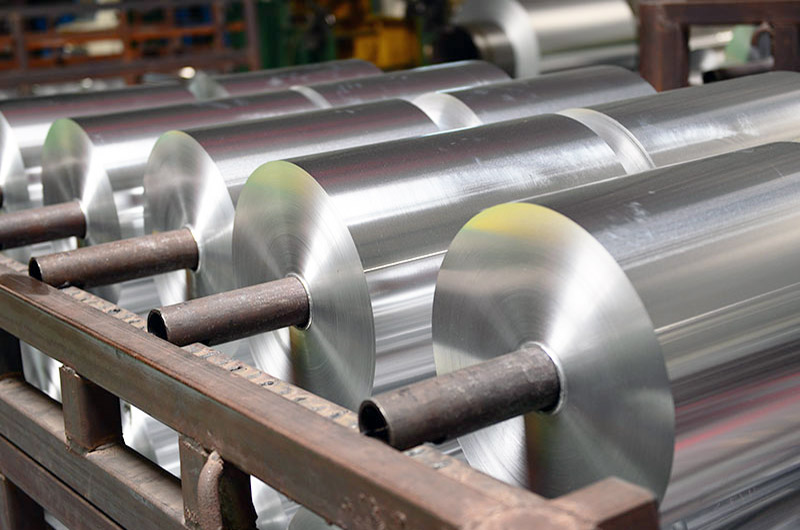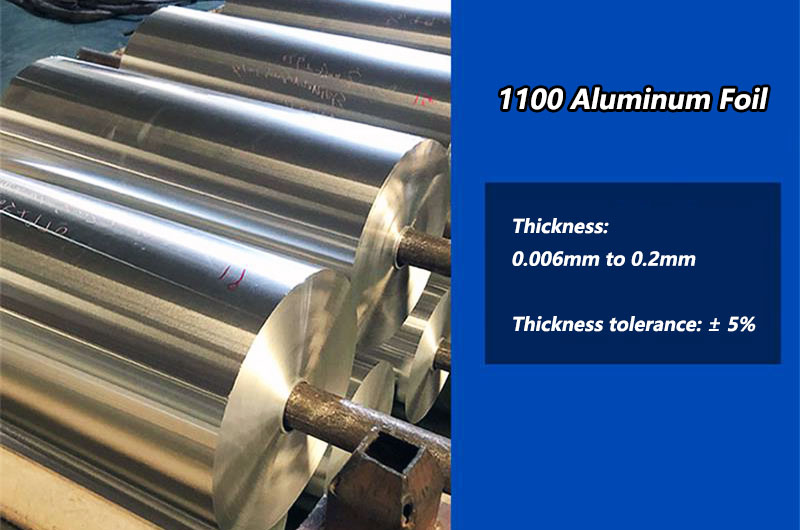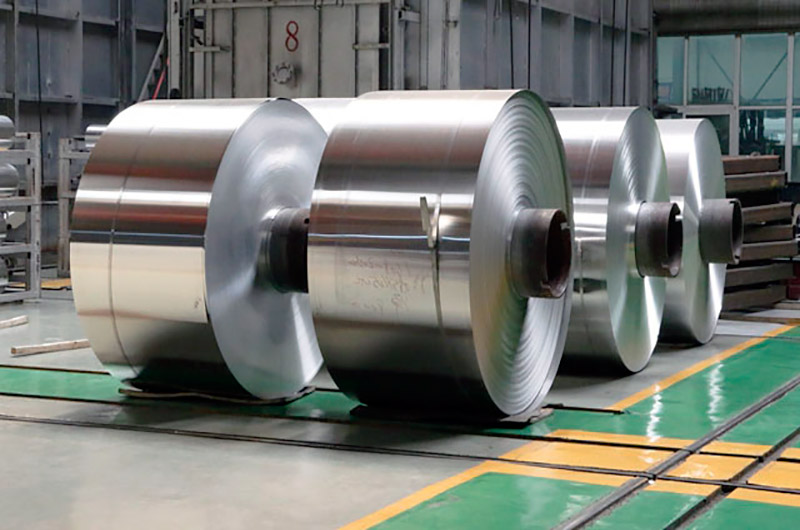- 1100 Aluminum Foil Composition and Characteristics
- 1100 Aluminum Foil Advantages
- 1100 Aluminum Foil Specifications
- Performance Characteristics Of 1100 Aluminum Foil
- 1100 Aluminum Foil Applications
- 1100 Aluminum Foil Production Process
- Surface Quality And Precautions for 1100 Aluminum Foil
- People also Search about 1100 Aluminum Foil
- People also Asks about 1100 Aluminum Foil
Aluminum foil has become an indispensable part of our daily lives, seamlessly wrapping our food, aiding in cooking, and serving various industrial purposes. Among the myriad options available, 1100 aluminum foil stands out as a versatile and widely used material, appreciated for its unique properties and applications.

1100 Aluminum Foil Composition and Characteristics
Alloy 1100
1100 aluminum foil belongs to the 1xxx series of aluminum alloys, primarily composed of aluminum (99.00% minimum). It is known for its excellent corrosion resistance, high thermal conductivity, and superior formability. This alloy is non-heat treatable, making it an ideal choice for applications that don't require high strength.
Pure Aluminum
One of the standout features of 1100 aluminum foil is its purity. With a minimum aluminum content of 99%, it is considered commercially pure aluminum. This high purity level contributes to its corrosion resistance and impressive electrical conductivity.
1100 Aluminum Foil Advantages
- Corrosion Resistance: The high purity of 1100 aluminum foil provides excellent resistance to corrosion, ensuring the longevity of the material in various environments.
- Formability: Its superior formability allows it to be easily shaped into different configurations, making it adaptable to a wide range of applications.
- Thermal Conductivity: The impressive thermal conductivity of 1100 aluminum foil enhances its performance in heat-related applications, contributing to its popularity in heat exchange systems.
- Non-Toxicity: In food and pharmaceutical packaging, the non-toxic nature of 1100 aluminum foil ensures the safety of the contents.
In the realm of aluminum alloys, 1100 aluminum foil stands out as a versatile and valuable material, finding applications across diverse industries. Its remarkable properties, including high purity, corrosion resistance, and exceptional formability, make it a go-to choice for manufacturers and artisans alike.
From preserving the freshness of our food to enhancing the efficiency of electronic devices, 1100 aluminum foil continues to play a pivotal role in shaping our modern world. As technology and industry evolve, the versatility and reliability of 1100 aluminum foil are likely to ensure its continued prominence in an ever-expanding array of applications.
1100 Aluminum Foil Specifications
Alloy Type: 1100
Aluminum Content: Minimum 99%
Temper: O (Annealed)
Thickness: Typically ranges from 0.006mm to 0.2mm
Width: Customizable based on application requirements
Surface Finish: Bright or Matte
Coil ID: 75mm, 150mm, 300mm, or per customer's requirements
Coil OD: Up to 650mm (standard), larger diameters available
Thickness tolerance: ± 5%.
Length tolerance: ± 5″.
Width and length tolerance: ±1/16″.
Tempering: HO / H22 / H24/ H18 etc.

Performance Characteristics Of 1100 Aluminum Foil
- Corrosion Resistance: Excellent resistance to corrosion in various environments, enhancing the material's durability.
- Electrical Conductivity: High electrical conductivity makes 1100 aluminum foil ideal for applications in the electrical industry, including capacitor foils and transformer windings.
- Purity: Commercially pure aluminum with a minimum purity of 99%, ensuring non-toxicity and suitability for applications in food and pharmaceutical packaging.
- Reflectivity: The foil's surface can be highly reflective, making it suitable for applications requiring reflection of light and heat.
1100 Aluminum Foil Applications
1100 Packaging Aluminum Foil
1100 Food Packaging Aluminum Foil: 1100 aluminum foil is commonly used in the packaging of food products due to its non-toxic nature and ability to preserve the freshness of the contents. It acts as a barrier against light, moisture, and contaminants, ensuring the longevity of the packaged goods.
1100 Pharmaceutical Packaging Aluminum Foil: The foil finds application in pharmaceutical blister packs, providing a secure and protective enclosure for medications.
2. 1100 Aluminum Foil for Electrical Industry
1100 Capacitor Aluminum Foil: Its high electrical conductivity makes 1100 aluminum foil an ideal choice for capacitor foils, contributing to the efficient functioning of electronic devices.
1100 Transformer Windings Aluminum Foil: The foil is used in transformer windings, where its conductivity and formability are crucial for optimal performance.
3. 1100 Aluminum Foil for Heat Exchangers and Insulation
1100 Aluminum Foil for Heat Exchangers: Due to its exceptional thermal conductivity, 1100 aluminum foil is employed in heat exchangers, ensuring efficient heat transfer in various applications.
1100 Insulation Aluminum Foil: It is also utilized in insulation applications, acting as a reflective surface to manage and control heat flow.
4. 1100 Aluminum Foil for Decoration and Art
1100 Embossing and Printing Aluminum Foil: The malleability of 1100 aluminum foil allows for intricate embossing and printing, making it a popular choice for decorative purposes and artistic applications.

1100 Aluminum Foil Production Process
- Alloying: The process begins with the alloying of raw aluminum, ensuring that it meets the specified composition for 1100 aluminum foil.
- Casting: The alloy is then cast into large slabs, which are subsequently rolled into thinner sheets.
- Hot Rolling: The sheets undergo hot rolling to achieve the desired thickness. This process enhances the material's mechanical properties.
- Cold Rolling: The hot-rolled sheets are further processed through cold rolling, which refines the thickness and imparts additional strength and surface finish control.
- Annealing: The foil is annealed, a heat treatment process that removes internal stresses and increases ductility. For 1100 aluminum foil, the temper is typically O (Annealed).
- Finishing: The foil is then cut to the required width and coiled for packaging and transportation.
Surface Quality And Precautions for 1100 Aluminum Foil
Surface Quality: The surface of 1100 aluminum foil can be bright or matte, depending on the specific requirements of the application. Bright surfaces are often preferred for decorative or reflective purposes, while matte surfaces may be chosen for functional applications.
Precautions:
Handling: Care should be taken during handling to avoid scratches or damage to the surface finish.
Storage: Proper storage conditions, away from corrosive environments and extreme temperatures, are crucial to maintaining the foil's performance.
Rolling and Forming: When forming or embossing the foil, it is essential to follow proper procedures to prevent cracking or surface defects.
Cleaning: Mild cleaning agents should be used to avoid damage to the foil's surface.
People also Search about 1100 Aluminum Foil
- industrial aluminum foil rolls
- 1100-h18 aluminum
- thickest aluminum foil
- commercial heavy duty aluminum foil
- extra heavy duty aluminum foil
People also Asks about 1100 Aluminum Foil
- What is 1100 grade aluminum?
- What is the difference between 6061 and 1100 aluminum?
- Is 1100 a pure aluminum?
- What is aa1100 aluminum used for?
